![]() a civil servant
a civil servant
 JP | EN
JP | EN
 JP | EN
JP | EN

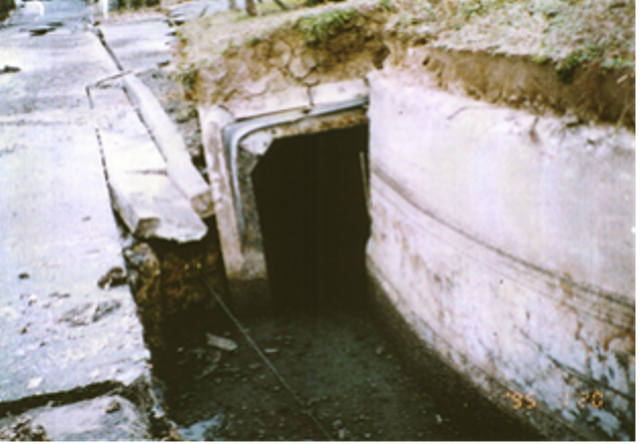 Photo: A spot where sewage flows into the plant was damaged.
Photo: A spot where sewage flows into the plant was damaged.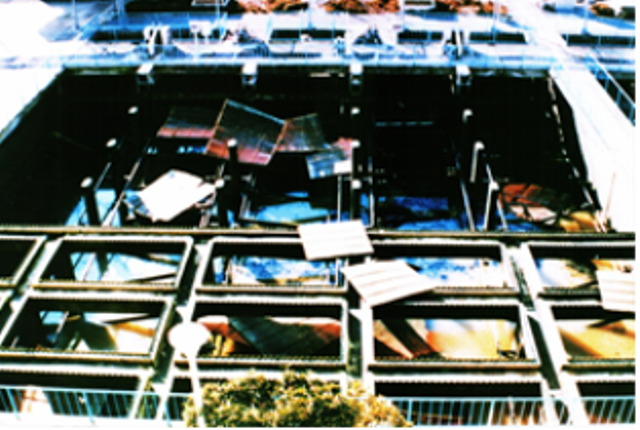 Photo: Damage to the plant
Photo: Damage to the plant Photo: The promenade with almond trees which bloom pink blossoms in spring, and a biotope with recycled treated water
Photo: The promenade with almond trees which bloom pink blossoms in spring, and a biotope with recycled treated waterThe master plan has three main concepts; “A sewage system which supports city development and citizens’ lifestyle”, “A sewage system which protects the environment”, and “A sewage system which works in harmony with residents”. In January 1996, it was revised using the lessons of the earthquake; including “disaster resistance” and “utilization in times of disasters”. These concepts make up our bible which has supported us for the last 20 years.
 Photo: “Kobe Sewage Future 2025: Kobe Sewage System Long-term Master Plan”
Photo: “Kobe Sewage Future 2025: Kobe Sewage System Long-term Master Plan”The big concern was how much the water should be sterilized for children to play in and for fish to swim in. If we added more chlorine, it would be more sanitary for children, but fish would not be able to swim in the water. In a discussion with residents and experts, a mother gave her opinion. She said, “Maybe we just have to teach our kids to wash their hands well after playing with water.” Everyone could understand her point, and it provided a good opportunity to think about the real issue at hand.
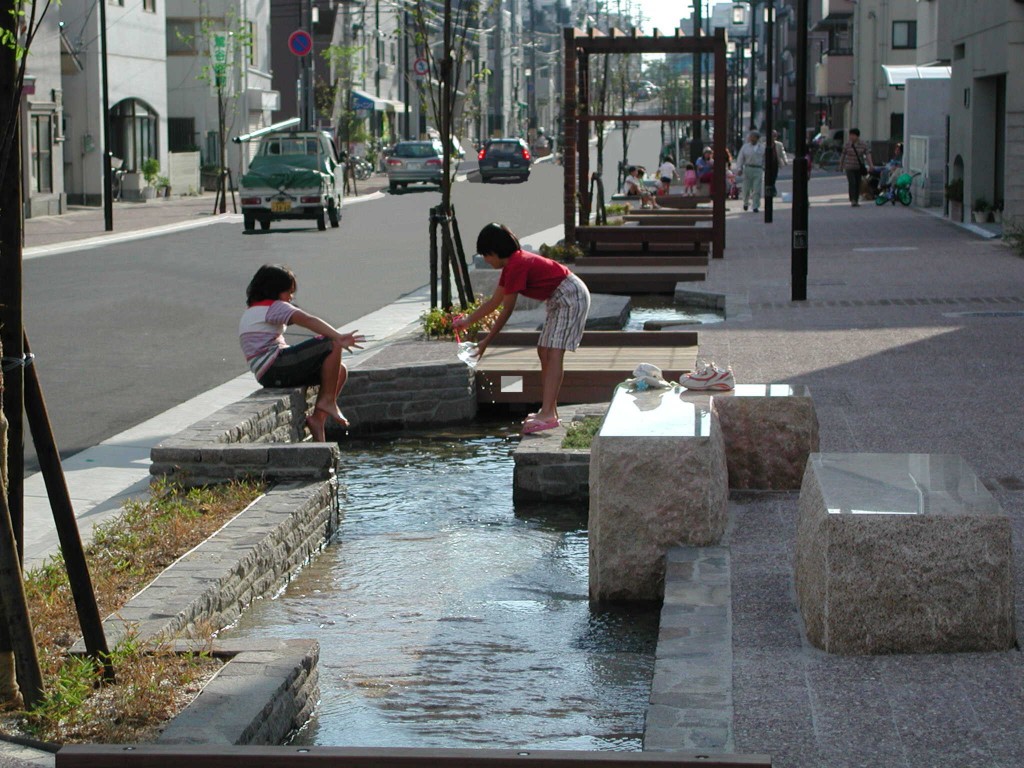 Photo: A stream made with the cooperation of the citizens, based on lessons learned from the earthquake
Photo: A stream made with the cooperation of the citizens, based on lessons learned from the earthquakeWe joined theOsaka Gas Co., Ltd. Network, which has many users, in order to realize a stable supply of Kobe Biogas for automotive fuel, and to utilize it more effectively. Now, we supply our Biogas to more than 3,000 households.
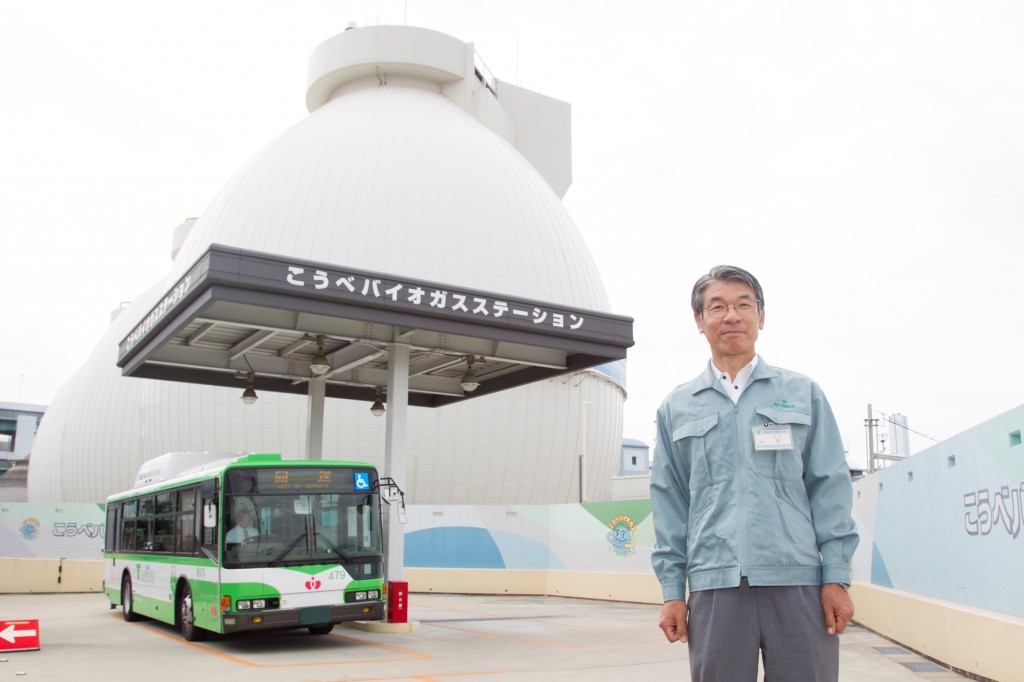 Photo: Kobe Biogas Station in the East Treatment Plant: now refueling
Photo: Kobe Biogas Station in the East Treatment Plant: now refuelingSince sewage systems rarely suffer direct damage from natural disasters, many sewage officials are not accustomed to the process of assessing damage and submitting reports to the government. We made this file based on our experience in the Great Hanshin-Awaji Earthquake so that we can be ready at any time to run to help. When the tsunami hit northern Japan in 2011, we dispatched our staff to support their restoration efforts. I believe that it is our mission to keep on spreading our expertise.
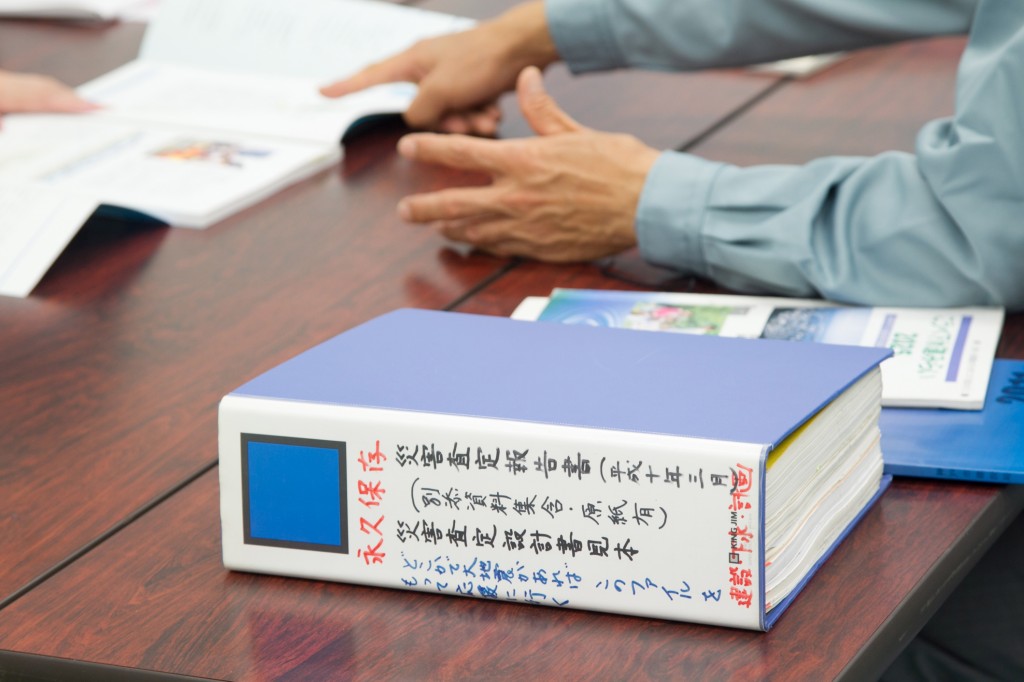 Photo: File to be kept indefinitely: filled with documents necessary for damage assessment
Photo: File to be kept indefinitely: filled with documents necessary for damage assessmentIt is essential that Kobe City use its experience to assume a leadership role in sewage system disaster response, and repay all those who helped us in our own restoration efforts.
We have two main roles. One is to keep the system running smoothly by replacing aged facilities in order to prevent malfunction. The other is to provide flood damage prevention. The number of sediment disaster is on the increase, and widespread floods have happened four times in Kobe’s urban areas recently. We must keep working on necessary measures to prevent natural disasters in cooperation with residents.
Keisuke Hata
Out of his 35-year career as a Kobe City Government public servant, Mr. Hata has been working in the sewage sector for 33 years. When the Great Hanshin-Awaji Earthquake happened on January 17 1995, it brought with it severe damage, and he was in charge of restoration of the damaged treatment facilities. Since then, he has committed himself to make the sewage system more disaster-resistant, and to work on other projects such as recycling sewage water as biogas. Here is our interview with Mr. Hata, who has been sharing his expertise with other parts of Japan and the world.